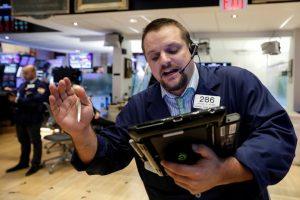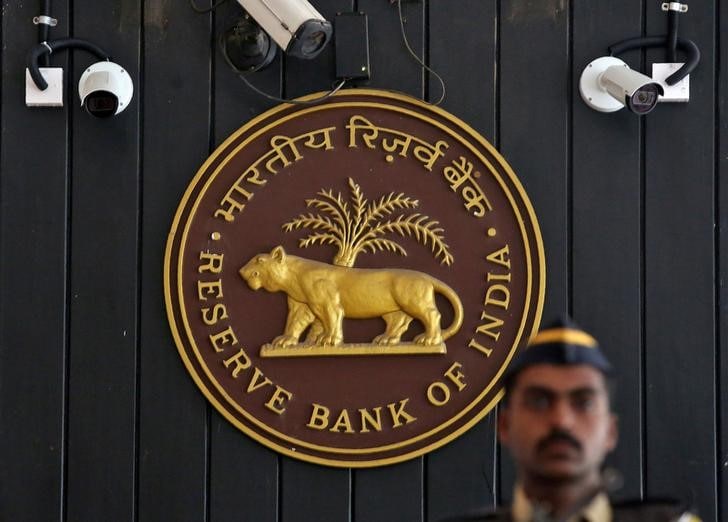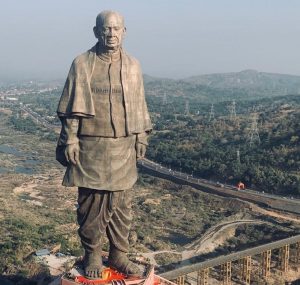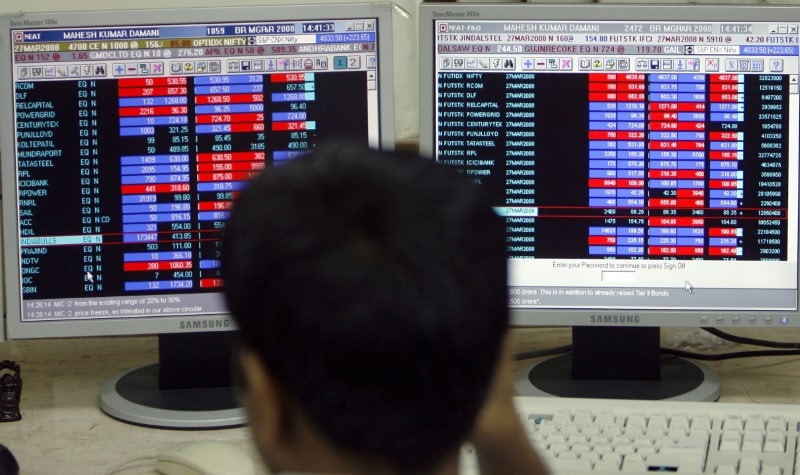Re-balancing mutual fund portfolio: Here is what experts have to say

KV Prasad Jun 13, 2022, 06:35 AM IST (Published)
 Listen to the Article (6 Minutes)
Listen to the Article (6 Minutes)
Summary
The festival of lights is here but the market has been very volatile. Equities have been falling and there is a talk of defaults in the credit market. In a situation like this what should investors do with their mutual fund portfolio is a big question. To know more about what funds to back and what is …
Continue reading “Re-balancing mutual fund portfolio: Here is what experts have to say”
The festival of lights is here but the market has been very volatile. Equities have been falling and there is a talk of defaults in the credit market. In a situation like this what should investors do with their mutual fund portfolio is a big question.
To know more about what funds to back and what is that one should avoid, CNBC-TV18’s Surabhi Upadhyay spoke with A Balasubramanian, chief executive officer and Mahesh Patil, co-chief investment officer of India’s third largest fund house Aditya Birla Sun Life AMC.
Watch: Investors need to constantly re-balance their portfolios, say Mutual Fund experts
Edited Excerpts:
Last year the sentiment was very different, the mood was very different. However, this year has been filled with learning. Your thoughts when you are looking back from last Diwali to this Diwali and everything that has happened in your industry.
Balasubramanian: It has been a good journey over the last maybe 5-10 years. I always keep saying that every 3 year of a good period has to be followed by 1-2 years of a bad period and then the cycle just goes on like this. Even the last two to three months, we saw a good pick up in the consumer durable sales and after GST implementation got stabilised, things were coming back to normal.
Last one and a half month have been pretty challenging. I think we have also seen some of the institutions which have showcased their presence for last 23 years and considered to be one of the best institutions from the financial service market suddenly collapsed for various reasons. So that definitely changed the mood of the financial market.
I always call it a passing phase. I think if you look back at the history, we have seen the 2008 crisis, we have seen 2013 when the currency became extremely volatile and we have similar kind of event. Sometimes we say that it is not the same as 2008, but no event repeats the next time but any new event is always different from the earlier event.
I am also not going back to 2008 because I was also tracking the financial markets back then and that was a very different time, those are hopefully just once in a lifetime or once in a generation kind of events that will happen, but talking about some of the other things, apart from the volatility that we have seen, this has been a year of a lot of changes for investors, a lot of regulatory changes. The regulator came out and decided to exactly define what will go in a largecap fund, in a midcap fund, new categories like value fund or focus fund. It also clearly defined categories also came into being and then just towards as we were getting into Diwali season, the next change happened in terms of the way expense ratios will be dealt with, commissions, etc. so from a regulatory standpoint how do you define the year for the end investor?
Balasubramanian: I think if you look at the customer at the centre of the piece and I look at the various regulatory framework that has come. To a large extent the customers have been the biggest beneficiaries of the changes that have been brought in as well as make them benefit out of the mutual fund investing in the long term. One good thing that has happened in the last few years, I always say that post demonetisation, the industry has now become one of the key industry in the financial market.
The role that the mutual fund industry is playing is increasing quite significantly. At the same time from the investors’ point of view, there is a significant confidence that has come on the back of investing in mutual funds. In my view that is a fundamental change that has come for the Indian mutual fund industry in the last few years.
That is actually true, we do the show Money Money Money and run a personal finance segment as well and we don’t see too many people calling in with panic, saying should I sell, should I exit – people seem to understand that if the market is down 10 percent on the index, if individual indices are down 20 percent then funds will suffer. But that also brings us to the asset allocation mix because the one question that is out there right now is should I tweak my portfolio to a certain extent, should I be rebalancing? So for asset allocation what would be your advice?
Balasubramanian: Asset allocation is again a function of the goal that you have set for yourself and how those are being met on the basis of various investments that have been made into various instruments, which include the equity as well as debt.
Constant rebalancing of the portfolio is must for every investor and that is generally done by investors themselves if they are well informed, otherwise they need to be done by distributors’ who are advising them that is something which constantly needs to be done.
At the same time, having seen the way each of asset class delivers, performance over the long-term and equity as an asset class has to play a dominant part of your portfolio in order to get your long-term wealth and fixed income should also be part of your portfolio to give you protection in your overall portfolio.
Looking at the current environment and if we are looking at moderate risk appetite, sort of growth-oriented portfolio with some requirement of protection as well then what would be the debt-equity mix?
Balasubramanian: The best way to start always is 50-50 and then depending upon where the interest lies, depending on what outlook that emerges in each of the asset classes taking into account the macroeconomic environment, as well as goal of each of individuals how their travel has to work then they can take to 60-40 or 40-60. In my case at this point in time, almost 50 percent of my investments are in equity and balance is in fixed income.
It has been a far more volatile year, from last Diwali to this Diwali, this is a year which has taught investors again that the equity market does not only go one way. So as you are looking at this current environment and you are looking at the fall that has set in, what is the message that you would like to give out to investors?
Patil: Indeed this year has been a pretty eventful year. After last year where it was a one way ride, I think investors are really seeing the true colour of equity markets. We have some macro headwinds domestically and also the global environment is turning a bit negative, I would say that the correction what we have seen in the market year-to-date, it has been a wide correction. A lot of stocks in the mid and smallcap are down to levels which are now looking pretty attractive and they have fallen by almost 30-40 percent from their peak levels.
The macro concerns are still there, but I think there are signs of slight positive signs in terms of oil prices have started to correct a bit, inflation is still benign. Despite the high oil prices and the rupee depreciation, we have seen inflation benign. So that should put some cap in terms of interest rates. Growth is slowly and steadily coming back to the economy. So given that, I would say global headwinds could take the market down still further from here.
At the index level, we are still flat, flat to maybe 1 percent lower at the Nifty level. If you start going to individual indices, then the cuts get deeper and deeper. However, at the headline index level also, do you see lower levels? The reason I am asking this is that retail investors have also gotten smart, they are now wondering whether I should buy now or if it is going to fall even more, then let me wait if I am getting things at 5 percent lower. So I think that is influencing decision making at the moment. Your thoughts on this?
Patil: I would say there is always a chance that market could undershoot on the downside. No one is able to catch the bottom. We have seen in the bullish market also, it has corrected 20-25 percent from its peak. More recently it happened in 2016. So given that, I think there could still be another 5-6 percent downside from these levels.
However, for retail investors, it is important to understand that as the markets started to look attractive in terms of valuations, I think one should not really wait for the last 7-8 percent downside and that is the headline indices, but the broader market as I mentioned, the correction is humongous.
So already there is value, so anybody looking to invest in the market as I said, there could still be another 6-7 percent downside. This is a good time to really build a good equity portfolio with a longer-term perspective. Like Balasubramanian mentioned, equity is always for long-term wealth creation.
Balasubramanian’s answer lies in that badge “SIP Now”. Is that your approach and thought process to the current environment?
Balasubramanian: I think one of the things which is clearly emerging in the last few years, you can never time the market and volatility increasingly becoming the part and parcel of the market. The only way to participate, I think that is something which is increasingly as an industry mutual fund has achieved is actually encouraging more and more SIP as a way of investing.
And it is astounding because even during this period of volatility, even September, the SIP inflow number has been very resilient, around Rs 7,000 crore is the kind of money that SIPs are pulling in.
Balasubramanian: It is close to about Rs 7,800 crore of money that comes in SIP and if you look back, the same number about exactly five years back, was just about Rs 1,800 crore. From Rs 1,800 crore now it has gone up to Rs 7,800 crore and it just keeps becoming – SIP as a way of investing it has become a part and parcel of every individual’s thought process. I am sure the industry will only keep growing; that is the way I think US markets have become bigger as an industry.
As a house, from what I read, your recent comments, the preference is not so much towards any market capitalisation right now because one also sees a lot of NFOs by the way of smallcap funds in the market. Is this a time to think midcap, smallcap or is this the time to think safety and make sure that a large chunk of your portfolio is in largecaps?
Patil: While the larger allocation will continue to be in the largecap and multicap scheme, I think it is the time to really build some allocation towards even small and midcap funds because this is the time where you are seeing now good value emerge over there.
There could be a near-term volatility in the small and midcap space, they could even undershoot on the downside, but if you are building a portfolio for the next 3-5 years, I think there is a space even for small and midcap to be part of the allocation at this point in time.
I know mid and smallcap is all going to be bottom-up and we cannot discuss stocks or companies, but just themes, stuff where you are seeing value in the market now, things that are exciting you?
Patil: One is the banking and financial services sector which is large portion of the market. There I think because of the current problem which is there on the NBFC side and the liquidity challenges, banks or even NBFCs which have a good strong liability franchise, I think they should do well in the medium to longer term.
So really we have seen a decent correction also in the NBFC sector. Not exactly in 2013 itself, we saw a big correction, I think we are similar in that scenario. So this could be a good time to really build some of the good quality liability franchise stocks in the NBFC and the banking space.
You are saying NBFCs that have solid liability franchise?
Patil: Franchise and a strong pedigree.
What about housing finance companies, they were the darlings till about August and then things have suddenly changed.
Patil: There are again there are business models undergoing a bit change, there is a pressure on margins and profitability. So at the right valuations, they would look good, but clearly, we prefer some of the other retail NBFCs rather than the mortgage finance companies at this point in time.
Your thoughts on this as well because especially, people who put money in the BFSI funds, they are worried a lot right now because they have made a lot of wealth but then again the talk being that whether fundamental business models are changing for NBFCs, there is a lot of talk right now whether growth is going to slowdown. What advice would you give to people who right now still have money in BFSI funds and what advice would you give to people who if they are aggressive enough, should they take a thematic fund approach and invest in a BFSI fund?
Balasubramanian: I think the whole financial services sector has to be looked at in-line with how they play on the economy. It is a sector which is considered as a proxy to the Indian economy. If you are bullish on Indian economy, then you have to be bullish on financial services sector. So the question does not arise that we should be negative or underweight.
At the same time, the current fluctuation that we have seen in the market is related to the valuation adjustment. The rerating and rerating is again the function of macro variables that impact these sectors as well as sentiment that impacts the sector. Lastly, also it is a sector which is driven by consumer spending pattern, it is also driven by the way the real estate market functions.
We go through the cycles but from the investors point of view, allocations into these thematic assets have to be some portion of the portfolio. So about 10-15 percent of the portfolio you allocate towards thematic sectors like banking and financial services or consumption led theme and these are permanent theme for India. One should have the ability to fathom the negative news.
There will be more negative news?
Balasubramanian: There will be some news which will still keep coming. The negative news does not stop actually, so you will see some kind of negative news coming in. The tolerance to understand, the risk tolerance to fathom these kinds of negative news and still stay confident of these sectors in the long-term point of view is a must.
Let us talk about other sectors that you like. Balasubramanian mentioned consumption, what are the thoughts there because correction is happening, but people are again raising questions. Whether consumption patterns will be as strong or not, whether car sales and these kind of things will continue to be as robust?
Patil: Consumption again we have discretionary consumption and the consumer staples over there. So rural consumption is still fairly good and that has been driving the overall consumption. We have seen recent numbers coming in from a couple of companies, so that remains pretty strong and being an election year, I think you will see a lot of spending on the rural side which should drive broader consumption. Companies which are more oriented towards rural consumption I think that should be fairly steady.
Again overall discretionary consumption also I think over a longer term, we still like that theme because that is where penetration levels are low. You will see demand remaining strong for a country like India where per capita income is going up. In the near term, there are some challenges because various reasons the auto sector, the increase in the insurance cost and also on the NBFC space because it has been a big lender, some kind of a contraction over there can lead to some slowdown in terms of discretionary sales in the near term.
However, you are buying stocks for a longer term, so near-term weakness because of short-term factors, I think it is an opportunity to buy good quality companies with a strong brand franchise and with longer-term growth visibility in that space. So that is a sector which we think looks good from a really long-term perspective.
What happened in the last couple of months is that people who had default investment in an IT fund maybe thoughtfully, maybe unintentionally, suddenly found themselves sitting on windfall gains. How are you looking at IT because again with the market correction even this part is coming under some pressure? How do you look at stocks from IT, pharma, export oriented and rupee sensitive sectors?
Patil: Some of these funds especially, export-oriented have done well because there is pressure on the rupee but what you look at is fundamentals whether those are making big change because that will sustain the longer term returns for these funds.
So in the IT sector, we have seen some kind of improvement in terms of growth outlook. The US economy is growing very strong but the growth increase is just about 200 basis points or so, and so they are not going to be long-term high growth stocks. We have seen a good amount of re-rating in this sector because of improvement in the growth outlook also to some extent flight to safety because the other sectors were not doing so well.
So IT remains a steady kind of outlook, companies have generally good cash flow and so buybacks are helping the stocks to support the prices and in the current context it should be doing fairly well but it won’t be big long-term compounding story, we have seen big re-rating happen over there.
Pharma remains still more stock specific because one announcement can change the fate of the stock in a single day and we have seen the macros have not improved that much. While the negative news from the US has stopped in terms of plants and the approvals over there but the pricing in the US environment, especially generic prices although it has abated from 10-15 percent decline to 4-5 percent decline but it has not that it is growing rapidly and so one has to keep that in mind when you are investing in some of these thematic fund like IT and pharma.
So, if Mahesh Patil is thinking of wealth creation for next three years then what is your pecking order in terms of themes, also please throw in some of the micro niche themes as well like tea, coffee, speciality chemicals?
Patil: If it is sectors it should be banking and financials, this is a good time to buy good quality franchise, liability franchise because that will do well over the next three years timeframe.
Continuing with consumer discretionary, I think near-term there is some pain but these are stocks which would continue to grow at a faster pace higher than the GDP growth rate. And very niche sectors like speciality chemicals, that is an area because of what is happening in China there is a big opportunity emerging for India and rupee depreciation should help to find some good multibaggers in that space.
Across market capitalisation, I would say no bias – largecap, midcap, small cap – you pick your choice they will all make good returns over a three year timeframe.
Talking about debt mutual funds, the retail investor class has just started waking up to the fact that there is a smarter way to invest in fixed income than just fixed deposit and just when this was happening we are getting headlines from credit markets about defaults, IL&FS, stress building up. So before we got into this patch, a lot of the advice I heard independent financial advisors (IFA) is giving was three years is the time you look at because tax advantage kicks in if you are debt fund investor so it is a good idea to stick with good quality accrual funds but does that advice still hold in this environment?
Balasubramanian: I think fixed income always holds merit for investors to invest and have it as a part of the portfolio, irrespective of whatever the noise levels of the market impacting sentiment, impacting the decision making power.
The simple reason is fixed income is broken into two parts – one is the accruals, which are the coupons that come of the investment that you make, and second is credit risk and third is the way interest rates fluctuates, your bond also keeps moving up and down.
But if you take a three or five year period, the most of the component you are talking about is accrual component, which is the interest income keeps increasing NAV that stays constant and your price fluctuations keeps moving based on either the credit loss or due to interest rate movement, it actually leads to increase in price or decrease in price. So if you take a 3-5 year period it gets averaged out.
Second is diversification is very important in equity and the same concept prevails in fixed income portfolio as well. Though I, as a money manager, we may end up losing from some of our investments, like you mentioned IL&FS, maybe some of us will lose money in that space but one has to understand the fact that it is only some portion of your portfolio you are losing. Let us assume it is two percent of your portfolio which goes bad but the rest of the portfolio is doing good.
This is very important to understand because for equity fund most people understand because the basket would be at least 35-40 stocks but if I am investing in a debt mutual fund and let us say there is a security that is going bad whether it is IL&FS or any institution typically what are exposures in a normal debt fund?
Balasubramanian: On an average exposures, in our case, most of the funds are less than AA and AAA would be anywhere between 10-15 percent. Within 10-15 percent, say 2-3 percent of your portfolio goes bad but in overall portfolio of 100 percent this 2-3 percent is a small proportion.
So from an investors point of view, if somebody stays invested for 3-5 years, he need not worry.
Going back to what you said that you would look at 50-50 mix between debt and equity or 60-40- so within the Aditya Birla Sun Life universe which are the debt funds you would put your money in right now where you think there is visibility and maybe it can be a portfolio of 3 different funds – could be mix of guild funds, duration funds also accrual. What kind of funds do you like?
Balasubramanian: If you have Rs 100 of investment, you need to keep roughly about 20-25 percent in liquid funds and rest 75 percent should be spread between short durations and credit funds. These are the two funds category you can make your investments. I mentioned about short duration fund, it takes into account short-term fluctuation in interest rates.
Just to clarify this is as per Sebi’s new nomenclature and it is very clear, you can go and check the category of debt MFs that are there. If it is short-duration fund then it is investing in securities which have maturing between 1-3 years, so you know what you are getting into, so that is something you will recommend?
Balasubramanian: That is something which I will definitely recommend. Credit fund of course as long as your time period of investment is anywhere between 3-5 years, it should also be considered given the fact that the portfolio has done good and in times like today, portfolios go up. Even if there is a casualty on an overall average basis the fund will recover.
So, if you are putting Rs 50 out of Rs 100 into equity funds, which funds do you like the most at the moment?
Balasubramanian: Equity is something which everyone knows we are taking a risk for long-term wealth generation. Biggest return comes when you take a relatively high risk, which comes in the form of investing in multicap as well as in the midcap and smallcap.
Though at this point in time, if you look at the midcaps you will feel sad because the price fall has been very high but that is where your earnings growth is going to be substantially better than the larger economic growth and that will accrue to you as investors only in the long-term. Therefore, I will put my money between multicap, midcap and smallcap.

Elon Musk forms several ‘X Holdings’ companies to fund potential Twitter buyout
3 Mins Read
Thursday’s filing dispelled some doubts, though Musk still has work to do. He and his advisers will spend the coming days vetting potential investors for the equity portion of his offer, according to people familiar with the matter

KV Prasad Journo follow politics, process in Parliament and US Congress. Former Congressional APSA-Fulbright Fellow



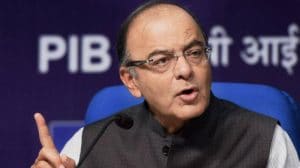






 Listen to the Article
Listen to the Article  Daily Newsletter
Daily Newsletter







